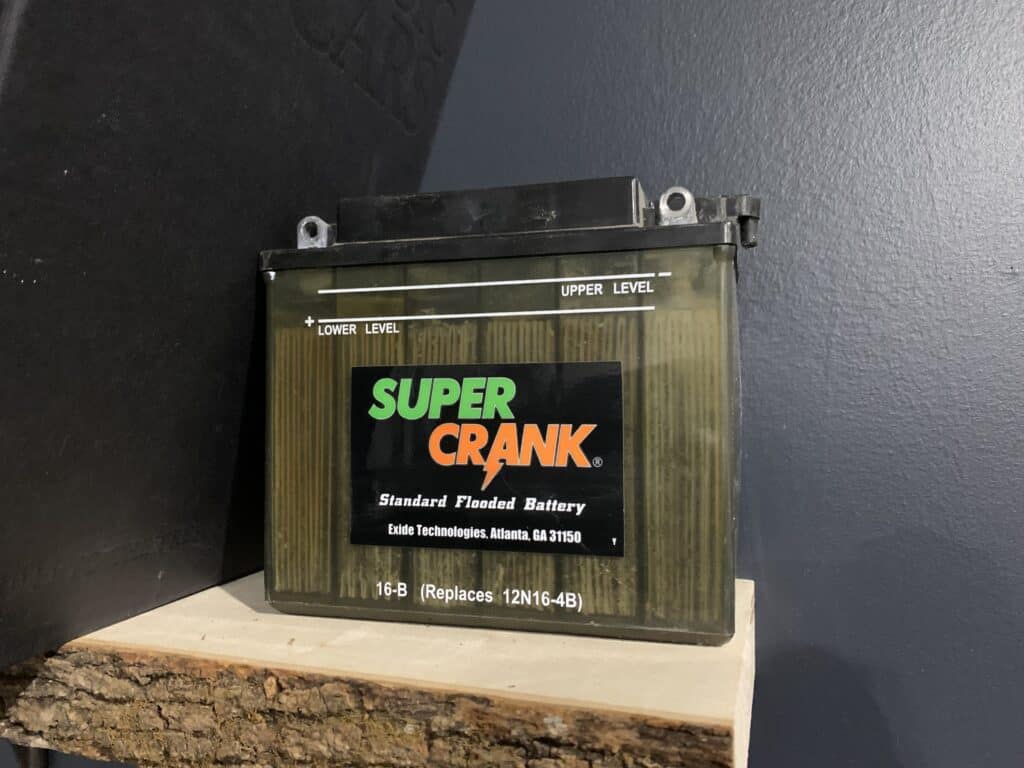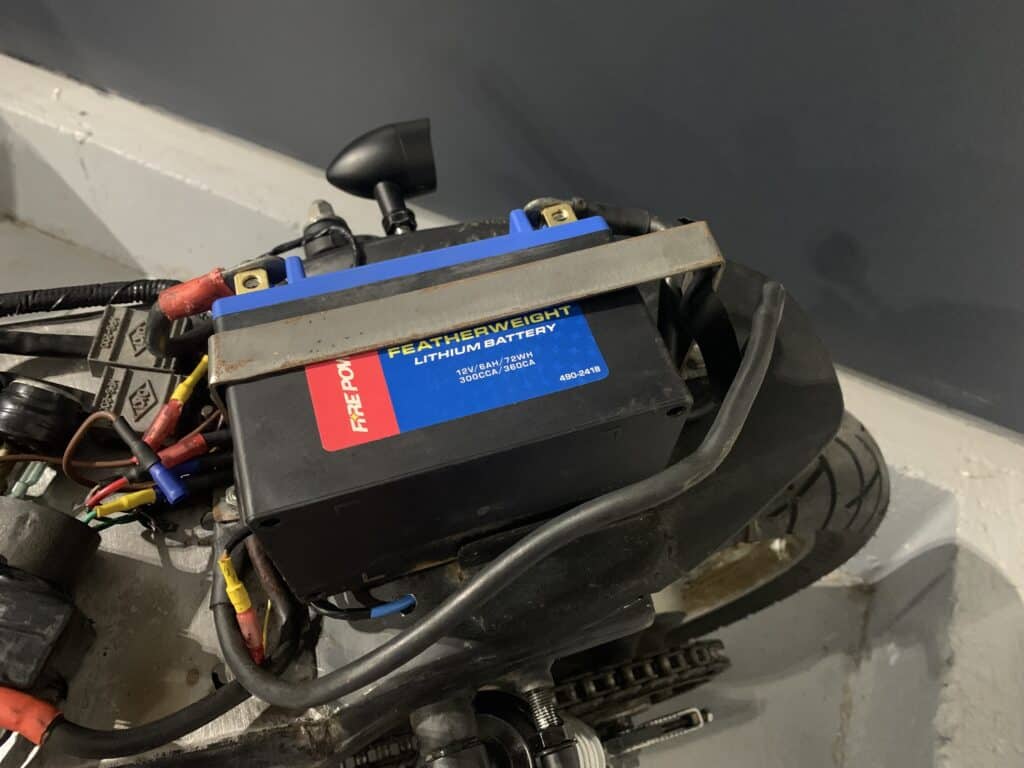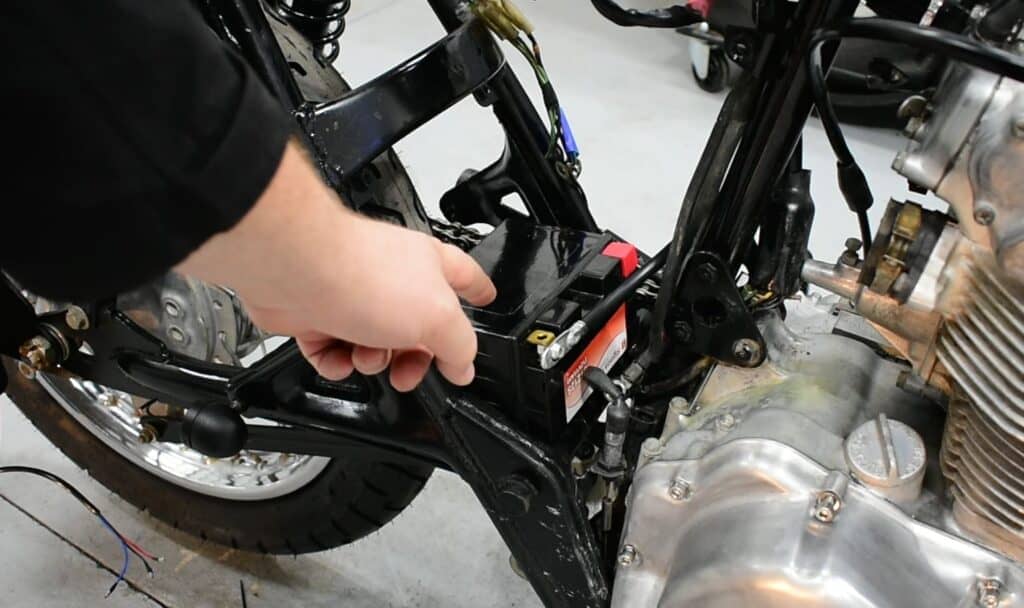
A good battery is critical to starting and operating your motorcycle. The battery’s primary function is to provide the power needed for the starter to crank the engine. Secondarily, the battery provides voltage to any electrical components, such as lights or gauges. However, you may wonder if these motorcycle batteries are interchangeable.
Are motorcycle batteries universal? Motorcycle batteries are not universal, although they are all 12-volt batteries. There are 3 or 4 main groups of batteries used for motorcycles and within those groups, each battery has a different cold cranking amp rating and physical size. Only use the battery type and size recommended by the manufacturer.
Batteries tend to go bad for different reasons and eventually require replacement. If you suspect you require a new battery, there are a lot of options to choose from and it can be overwhelming and confusing to pick the right one. We can help you figure out which battery is right for you and why you can’t just simply use someone else’s motorcycle battery.
How They Are The Same, But Different
All batteries are designed on the principles of voltage and amperage. A battery is constructed of several cells filled with thin metal plates as well as battery acid otherwise called the electrolyte. The metal plates are either made of lead or coated in lead oxide which is reactive to the acid.
This reaction is an electrochemical reaction and is harnessed to be useful. Each battery has 6 cells which each have a charge of 2.1 volts, and when combined that creates 12.6 volts. So whenever someone mentions a 12 volt battery for a car or motorcycle they actually mean a 12.6 volt battery.
When it comes to motorcycles, a characteristic that makes a big difference is the dimensions of the battery. In a car, there is a bit more room to work with, but a motorcycle frame is much smaller with much less extra space. Manufacturers include the battery size in the design. This size differential is what makes motorcycle batteries not universal.
For example, a battery for a 125cc engine with 50 cold cranking amps would sound and act like it was dead if used to try and start a larger 1000cc motorcycle. There are many reasons why this is and knowing before purchasing can save some time and frustration at the parts store counter.
Along those lines, they all look the same. Different brands will use different colors, but that doesn’t indicate much about the specifications of the battery. Likewise, they are all close in dimension, which size is not indicative of what kind of battery it is.
However, all batteries will have ratings and info printed on a sticker. They may also have a date of manufacture, but that isn’t universal.
Different Types Of Motorcycle Batteries

The most basic battery is called a lead-acid battery in which lead plates are flooded with the battery acid. This causes the electrochemical reaction as described above. These are typically the cheapest but don’t offer much for extended durability. The plates can break apart under rough driving conditions, such as in off-road applications or motorcycles that have vibration issues like old Triumphs and BSA’s.
Another con to a basic flooded lead-acid battery is their aversion to cold weather. When fully charged, the acid has a lower freezing point, but if your battery is not fully charged, the electrolyte connects with the lead leaving the water, which tends to freeze. Older or damaged batteries are less likely to hold a full charge and therefore struggle during the cold months.
Absorbed Glass Mat or AGM batteries use fiberglass mats to absorb the acid between the lead plates. These mats are tucked between each lead plate and act as a cushion to support the plate and a sponge to keep the battery acid against the plates. These tend to be more expensive than regular batteries due to the higher manufacturing costs. They are also sensitive to being overcharged.
These batteries are just upgraded flooded lead-acid batteries and offer a lot of pros. AGM batteries also have a valve system to prevent spilling or escaping gasses. The cushioning effect of the mats inhibits the lead plates from breaking during rough riding. As compared to a basic battery, AGM batteries are overall more durable and more reliable while having a quicker charge time.
Another type is a gel battery in which the acid is suspended in a gel substance. These batteries don’t need to be upright to be used, which can be beneficial for design engineering. Gel batteries are not used in high-discharge applications, like starting and engine.
They are used in applications such as electric wheelchairs, electric boat motors, and applications where a backup of low-amperage is needed.
Lithium-ion batteries are constructed using lithium and graphite covered in an ethylene electrolyte. The idea of the electrochemical reaction is the same, just using these elements. Li-ion batteries are smaller and lighter weight compared to other types and therefore are appealing to racers.
There is a potential to discharge the battery beyond recovery, but with built-in circuit protection, that likelihood is greatly diminished. This protection also covers overcharging, which can overheat and damage the battery. Some Li-ion batteries come with spacers to make upgrading a quick and easy process.
The most common types of batteries for motorcycles are flooded or AGM with Li-Ion gaining popularity. Flooded are going to be the least expensive, but will require more maintenance and may not perform as well as other types. AGM batteries are a bit more pricey than the basic flooded but offer more performance and durability.
Lithium batteries offer high performance but tend to cost even more. They also can be sensitive to incorrect storage but are very durable against vibrations.
A word about maintenance: as mentioned, older batteries or damaged batteries will not hold a charge as well. To maintain a battery, it needs to be constantly recharged. Allowing the battery to fully discharge makes it harder to fully recharge. If a partially charged battery sits during the off-season, it will likely not have a charge no matter what type it is without proper maintenance.
There are products called battery tenders that keep a very small amount of amperage flowing through the battery to keep it in a fully charged condition. This will extend the life of the battery, especially during the colder months when the bike isn’t seeing a lot of action and the battery isn’t getting charged during riding.
How Do I Know Which Battery To Buy?

If you are in the market to get a new battery for your motorcycle, be sure to have the right type in mind before making a purchase. Having the right battery is key to keeping your bike in optimal running condition. The manufacturer will install a battery that is optimized for the design, but upgrading to a different battery shouldn’t affect the performance.
My personal preference for batteries are AGM batteries. They can be found for a very low cost and tend to last years longer than regular lead acid batteries. They’re also easier to place and hide on a motorcycle frame. The cost of lithium ion batteries is usually double or triple that of AGM batteries, which makes it not worth it for me.
All motorcycle batteries are going to be 12-volt batteries. One other specification you will be looking at is the cold cranking amps (CCA). The CCA rating refers to how many amps the battery can flow in a cold condition (0 degrees) for 30 seconds without dropping below around 7.5 volts.
An engine with a higher compression ratio will require more power to crank, so it’s good to know what CCA you will need. All batteries will have the CCA rating printing on the label, so it is simple to cross-check from the old battery to a new one.
Another rating to pay attention to is the Amp Hours (Ah). This is a measure of how capable the charge of the battery is. In other words, it is a measure of how long the battery can supply a consistent voltage before being drained. If your bike has a few electronics installed, it will draw power when the alternator isn’t charging (like at an idle). This is where the amp-hour rating is good to know.
It is not necessary to purchase the battery with the most CCA’s and/or Ahs. Follow the manufacturer’s specifications for these ratings. Often these ratings are used as a marketing tactic to get consumers to purchase the more expensive battery. If you have your original battery, it is a safe bet to match its ratings.
If you don’t have the original battery or don’t have an owner’s manual, there are ways to figure out what battery you need. There are tons of online databases to narrow down which battery your bike needs. Also, motorcycle shops will be able to advise on the correct battery and may have them in stock or be able to order it in.
Be wary of shopping online because it can be difficult to know what exactly is going to be shipped. Similarly, the cheap online parts are too good to be true, so be cautious.
Conclusion
While motorcycle batteries are not universal, they do share a lot of similar characteristics that can be compared when deciding which is right for your motorcycle.
There are different types with their own pro’s and con’s. Refer to manufacturer recommendations for specifications or ask a professional for extra help. Pay attention to CCA’s and Ah’s and purchase a trusted brand. Following these principles will direct you to getting the best fit for your motorcycle.
